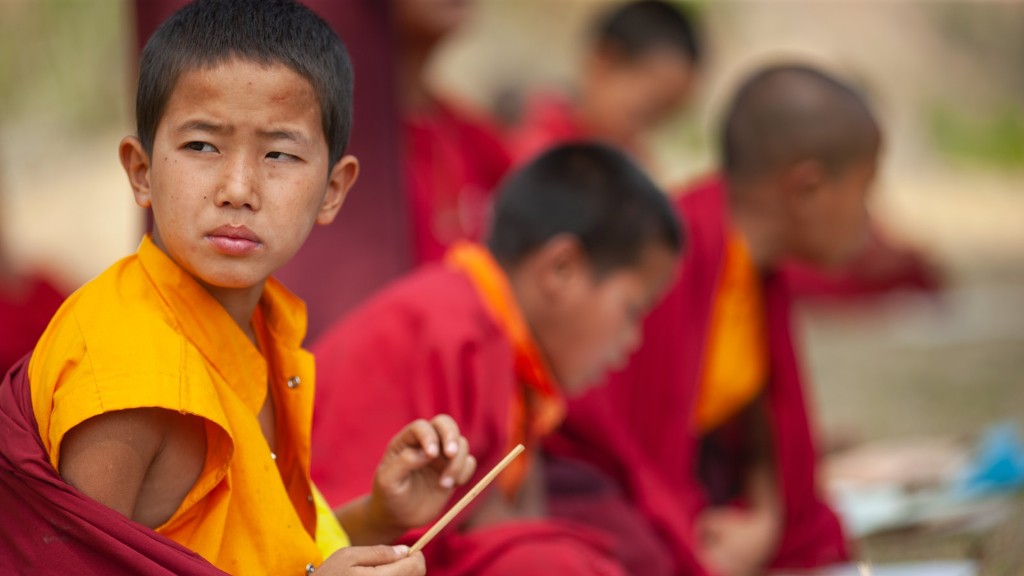Hinduism is an ancient, diverse, and complex religious tradition that has its roots in the subcontinent of India. It has influenced many cultures and regions around the world. Hinduism has no single founder or religious authority, and it has no centralized governing structure. Instead, it is a loose collection of traditions and beliefs that have evolved over time. It is sometimes referred to as “the oldest living religion in the world” due to its antiquity and vast scope.
The core belief of Hinduism is the belief in one supreme God (Brahman) who is believed to manifest in a multitude of forms. Hindus believe in a cycle of birth and death, known as karma, in which our actions from this life determine our circumstances in the next. Hindus also believe that by following certain spiritual paths and by engaging in particular religious practices, one can achieve spiritual liberation and become one with Brahman.
Hinduism is one of the most geographically widespread religions in the world, with roughly one billion adherents around the world. The majority of Hindus live in India, but there are large populations of Hindus living throughout South and Southeast Asia, as well as in the Caribbean, Africa, Europe, the United States, and Canada. Hinduism was the major religion of South Asia until the influx of Islam with the Arab conquests of the 8th century and the forced conversion of large parts of India by Islamic invaders.
Hinduism is a way of life rather than a set of beliefs. It is characterized by its diversity and flexibility, its emphasis on personal spiritual experience, and its variety of gods and goddesses. Because there is no central authority in Hinduism, its practices and beliefs vary widely among its adherents. However, there are certain core beliefs that unify Hindus and make Hinduism a distinct religious tradition. The primary scripture of Hinduism is the Vedas, a collection of ancient hymns that are believed to be revelations from the gods.
Hinduism is often identified with its various ritualistic practices, such as yoga, meditation, and mantra chanting. These rituals are believed to help one to attain a higher spiritual understanding and to bring one closer to Brahman. Hinduism also includes a variety of religious festivals, such as Diwali and Holi, that celebrate the birth of gods and goddesses, and the changing of the seasons. These festivals are often celebrated with elaborate ceremonies and colorful processions.
Hinduism also plays an important role in many people’s daily lives, with Hindu symbols and images appearing in everything from art and architecture to food and dress. Hinduism influences how people think and act, with many of its teachings informing social customs and cultural norms. Its philosophical ideas and scriptural guidance are also widely discussed and debated in public forums all over the world. Hinduism is not a monolithic religion, but rather a rich, diverse fabric composed of many different elements.
Practices
The practices of Hinduism have been shaped by centuries of exploration, philosophical inquiry, and artistic expression. Hinduism includes a variety of rituals, such as puja (worship of images), japa (mantra repetition), and a number of unique observances. Hindus also participate in a variety of religious pilgrimages, including to sacred sites, such as the Ganges River, the Sactu River, and Mount Kailash. Puja, prayer, and meditation are also essential practices for many Hindus and are deeply embedded in daily life.
Hinduism places a strong emphasis on the power of mantra, which is also known as “meaningful sounds”. Mantra repetition is believed to bring about positive changes in the body, mind, and soul. In addition to mantra repetition, most Hindus engage in devotional practices, such as worshipping their personal deities. Hindus also practice yogic disciplines, such as hatha yoga, which is thought to help the practitioner achieve balance and peace of mind.
Hinduism also emphasizes the importance of self-discipline and ethical behavior. Many Hindus subscribe to the tenets of ahimsa, or non-violence, in their daily lives. This includes abstaining from drinking alcohol, eating meat, and engaging in other activities that could cause harm to oneself or others. By adhering to these practices, one is thought to be living in accordance with Hinduism’s philosophy of dharma – the path of right living.
Philosophical Foundations
Hinduism is not just a religion; it is a worldview in which philosophy, spiritual practice, and societal norms are all intertwined. Hindu philosophy is based on the ideas of karma, reincarnation, and an ultimate quest for liberation from the cycle of suffering and rebirth. The most widely accepted Hindu philosophical systems are the Vedanta and the Yoga. These systems are based on the teachings found in the Upanishads and the Bhagavad Gita, two of the most important Hindu texts.
The Vedanta school of thought generally views the world in terms of dualism, with a self (atman) inextricably linked to a higher reality (Brahman). The goal of existence is to realize the unity of one’s self and the ultimate reality. The Yoga school of thought has a more practical focus, emphasizing the physical, mental, and spiritual practices that can help one to find balance and peace.
Hindu philosophy also includes the Samkhya system, which recognizes the existence of a conscious mind and an unconscious body, as well as the four classic paths (or margas) of yoga. These paths are Raja yoga, Jnana yoga, Bhakti yoga, and Karma yoga. Raja yoga is the path of meditation, while Jnana yoga is the path of wisdom and knowledge. Bhakti yoga is the path of devotion and love for the divine, and Karma yoga is the path of selfless action.
Social Structure
Hinduism has traditionally been associated with a societal structure based on four classes, or varnas: Brahman, Kshatriya, Vaishya, and Shudra. These classes are closely associated with the four ashramas, or stages of life, which are stages of spiritual practice and growth. The four ashramas are Brahmacharya, the period of student life; Grihastha, the period of married life; Vanaprastha, the period of family life; and Sannyasa, the period of retirement and spiritual contemplation.
Hindu society is also based on the principle of dharma, which can be thought of as the “duty” that each individual must fulfill in order to live according to the law of the land and live a life of spiritual fulfillment. The concept of dharma is closely tied to the idea of karma, or the idea that one’s actions and thoughts bear consequences for one’s future lives. Each individual is responsible for their own karmic debt and must strive to live a life in accordance with the principles of dharma.
Symbols
Hinduism is often associated with certain symbols and images which are often used in worship and spiritual practice. The symbol most closely associated with Hinduism is OM, the sacred syllable which represents the belief that the entire universe is contained within a single sound. Hindus often use OM as a symbolic representation of the divine or as a way of focussing the mind in meditation. The trident (trishula) is a common Hindu symbol that is associated with many of the gods and goddesses in Hinduism, most notably Shiva and Durga.
The swastika, an ancient Hindu symbol, has often been confused with its more recent associations with Nazism and fascism. The swastika is a cross with its arms bent in a clockwise direction and is associated with spiritual power and good luck. Other symbols of Hinduism include the lotus (associated with purity and spiritual growth), the conch shell (associated with wealth and power), and the trident (associated with Lord Shiva).
Forms of Worship
Hindus can choose to worship their own personal deity or Pantheon of Deities. Worship often involves rituals, such as the offering of flowers, the lighting of incense and the recitation of mantras. Hindus can also participate in devotional activities, such as pilgrimages. Devotees often make pilgrimages to sacred places, such as temples and shrines, to seek blessings from their chosen deity.
Many Hindus also engage in yajna, a Vedic fire ceremony that is thought to bring about spiritual power, positive energy, and peace. Hindus engage in yajna for a variety of reasons, such as for healing, the purification of the environment, and the attainment of prosperity. A variety of mantras are uttered during the ceremony, and offerings are made to the fire. Yajna has spiritual and social significance, as it is thought to unite a community by creating a shared sense of purpose and intention.
Conclusion
Hinduism is an ancient and complex religious tradition that has been a major influence on cultures around the world. It is based on the belief in the power of one supreme God – Brahman – and the idea of Ahimsa, or love and non-violence. Hinduism is characterized by its flexibility and diversity, with its adherents engaging in a number of rituals and practices, such as puja, vomiting, and mantra repetition. Hinduism also has philosophical underpinnings, with its main philosophical systems being Vedanta and Yoga. Hinduism also includes a societal structure that is based on four classes and four stages of life, and it is often associated with certain symbols, such as OM and the Swastika.


